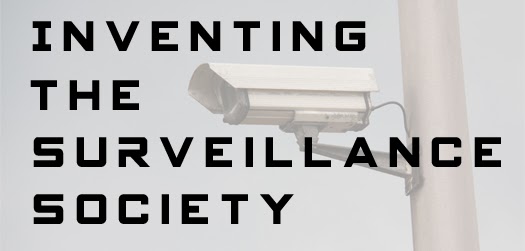
When Eric Hintz called to ask if I would speak on a symposium about “surveillance,” I thought at first he had my number confused with the NSA. Eric is an historian with the Smithsonian’s Lemelson Center for the Study of Invention and Innovation, and the coordinator of the Center’s upcoming symposium, Inventing the Surveillance Society, to be held Oct. 25 at the National Museum of American History and via live webcast. Eric explained to me that “surveillance” in this context encompasses the massive amounts of data that our environment is actively or passively collecting about us via ubiquitous sensors and networked devices. The symposium includes a session on “Surveillance in Museums and Cultural Attractions,” (that’s when I add my two bits).
In a blog post announcing CFM’s Trendswatch 2013 report, Elizabeth Merritt speculated that a future museum visit may go something like this:
- On the way in, a staff member asks if you want to borrow a “digital disconnect” pouch for your mobile device, to help you go offline for a stress-free visit.
- But you decide to opt for the fully immersive digital experience. You authorize your mobile device to track your progress through the museum, pull information from exhibits as you approach, synch with your bio-monitor wristband to assess your reaction to the experience and suggest what other galleries you might enjoy.
Depending on your point of view, this future museum visit might seem Orwellian in its level of surveillance or really cool with lots of individually-tailored content delivered right to your iDevice. But if you’ve been paying attention to Edward Snowden and the revelations of the NSA’s domestic spying, you realize that this “future” scenario is already here. We are being watched—anytime we enter a building, place a phone call or visit a website. This is especially true in museums—with metal detectors, bag searches and lots of security cameras, museums are places where we interact with surveillance in a very direct way. So it’s worth asking: how did our surveillance society emerge, and what is the effect of ubiquitous surveillance on our everyday lives? More specifically, what is the current and future role of surveillance in museums and cultural attractions?
 |
| The symposium banner image was assembled by Joyce Bedi using a camera image from Silver Spoon (Own work) [GFDL or CC-BY-SA-3.0-2.5-2.0-1.0], via Wikimedia Commons. |
To tackle these questions, the Smithsonian’s Lemelson Center is presenting Inventing the Surveillance Society, a symposium exploring the role of invention and technology in a modern world where our actions (and transactions) are constantly being monitored. The symposium will bring together scholars, inventors, policymakers, members of the media and the public to discuss the historical evolution of surveillance technologies, and their contemporary societal implications. Assuming an end to the current government shutdown, the symposium will take place on Friday Oct. 25 at the Smithsonian’s National Museum of American History in Washington, DC. All events are free and open to the public and will be available via live webcast.
We invite the museum community to attend or tune in to our daylong symposium, especially our session on “Surveillance in Museums and Cultural Attractions.” Because of the treasures they hold, museums have always been sites of intense surveillance, but the scope of that surveillance is expanding. At museums and other cultural attractions, surveillance cameras help ensure the safety of thousands of visitors whiles securing priceless artifacts and works of art. However, those same cameras (with the right facial recognition software) can also be used to count visitors and analyze their demographics. And as the Trendswatch report suggested, visitors’ smartphones can already deliver rich, location-specific content to complement in-gallery experiences. Meanwhile, mobile apps also provide the museum staff with a trove of data about visitor behaviors, from walking paths to dwell times. Again, depending on your point of view, this is either really exciting, a little creepy, or both.
Thus, in this session, we’ll examine the emergence of surveillance technologies in museums and cultural institutions, and their potential to transform the visitor’s experience and visitors’ studies. We have three terrific speakers. Steve Keller, a leading security consultant (and a member of AAM’s Centennial Honor Roll), describes the various surveillance technologies in place at museums around the world, while explaining a paradox: additional surveillance technologies can actually introduce more potential vulnerabilities from hackers and cyber-thieves. Sam Quigley, chief information officer at the Art Institute of Chicago, describes how his museum implemented comprehensive WiFi coverage throughout the museum to power content-rich mobile applications. He also addresses the touchy questions that arise from the wholesale acquisition and analysis of data revealing visitors’ movements and usage. Finally, CFM’s own Elizabeth Merritt speculates on the future of museum surveillance and asks some tough questions: Will visitors embrace or reject the increasing use of surveillance technology in museums? Can museums enforce security and serve their patrons while respecting the privacy of their staff and visitors? Nancy Proctor, the head of the Smithsonian’s mobile strategy and initiatives, will serve as the moderator of the session and lead what we hope will be a vigorous Q&A session and discussion with our friends from the museum community.
We hope you’ll join us on Oct. 25, in person or over the web! And you can follow the Lemelson Center on Twitter @si_invention.








